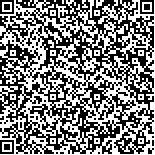下载中心
优秀审稿专家
优秀论文
相关链接
摘要

遥感产品真实性检验是定量遥感基础研究的重要环节,是客观评价遥感产品精度、稳定性和一致性的重要手段,对于提高遥感定量化水平、推动和扩展遥感产品的深化应用具有重要的意义.本文基于当前陆表参数遥感产品真实性检验研究的相关成果,归纳总结了陆表参数遥感产品真实性检验方法,并就其中的5种真实性检验方法,即基于地面单点测量检验、基于地面多点采样检验、基于高分辨率数据的检验、交叉检验和间接检验,阐述了各方法的特点、局限性、适用条件.文章在最后探讨了陆表关键参数遥感产品真实性检验评价指标和验证中影响精度评价的关键因素.本文对于遥感产品真实性检验工作的开展和真实性检验系统研发具有重要的指导意义.
The important function of land surface remote sensing products in scientific research and quantitative application lies in their capability to record spatial-temporal earth surface features at a relatively enhanced performance. Validating quantitative remote sensing products involves evaluating their accuracy, stability, and consistency to show the performance of these products. This study investigates the validation method at a global scale according to the features of land surface parameters. The validation method is categorized into five main types: validation based on a single-point ground measurement, validation based on multipoint ground measurement, validation based on high-resolution remote sensing data, cross validation, and indirect validation. The characteristics and applicability of these methods are expected to support developments in validation techniques and widen the application of remote sensing products.In situ data, as the basis of validation data sets, have been shown to influence validation method development. Given the differences in spatial resolution between ground measurement and satellite measurement, validation is adjusted according to land surface features and the parameter scale effect. For parameters that do not show obvious scale effects, a direct point-pixel comparison can be performed. However, most of the land surface parameters show scale effects when the land surface is heterogeneous. Therefore, multiple-point measurements within a pixel are necessary, with the average value of these points used to compare with satellite pixel values. If the land surface is heterogeneous and even the multiple points cannot capture the intra-pixel variation in the parameter features, a multi-scale validation strategy based on high-resolution imagery should be used to obtain unbiased pixel scale values.The satellite value matches well with the in situ value when land surface is homogeneous. However, a scale mismatch is observed between the ground-based measurement and coarse-scale satellite measurement in land surface heterogeneity. Using multiple-point measurement is necessary to capture the variance within a larger region or use a fine-scale map as a bridge between the ground-based value and coarse-scale remote sensing value. The average value of multiple points within a pixel scale can represent the pixel scale "ground truth" when the land surface is not considerably heterogeneous. Otherwise, the aggregate value of high-resolution imagery is closer to the pixel scale "ground truth" relative to multi-point measurement.This study has demonstrated that remote sensing product validation, including in situ sampling, scale effect, and precision assessment, is a significant and necessary step before remote sensing products are applied. The five main validation methods are validation based on a single-point ground measurement, validation based on multi-point ground measurement, validation based high-resolution remote sensing data, cross validation, and indirect validation. These methods could be used according to the heterogeneity of the land surface and the scale effects of parameters. For relatively homogeneous land surfaces, ground-based measurements are representative enough for the sample plot, and the scale effects can be ignored. For heterogeneous land surfaces, multi-point measurement observation, or multi-scale validation strategy based on high-resolution imagery are recommended to represent the pixel scale as "relative truth".

